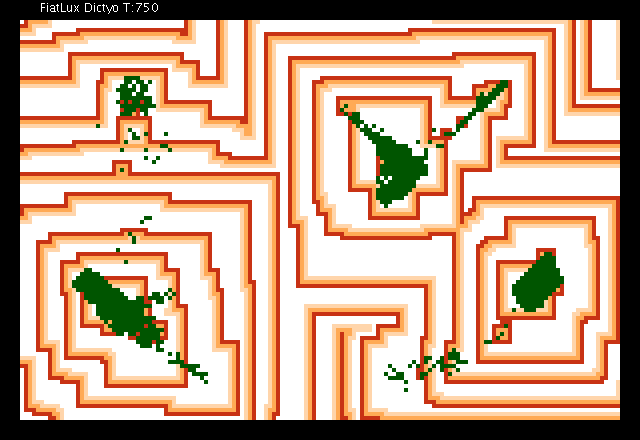AMYBIA
Aggregating MYriads of Biologically-Inspired Agents

Milestones of the project
To develop this research project, several research topics can already be predicted as necessary. We list them briefly below:
Expected benefits and broader expectations
We expect that this project will allow us to create synergies and help us make a step forward in:
- promoting a new way of conceiving complex systems : the theory-hardware codesign
- developing tools for efficient simulations on FPGAs
- proposing an elegant and effective solution to the decentralised gathering problem
- comparing our solution to other solutions such as using virtual ants with diffusion-evaporation schemes
We also expect that besides the planned research activities,
this project will allow us to create synergies with potential collaborators.
Two collaborative approaches have already been identified:
-
Using more elaborate simulation tools: For the study of the system statistical features, an additional approach is to benefit from the properties of the programming language MGS and to take advantage of its aptitudes to handle neighbourhood and spatial relationships. The idea is to improve the performance and expressivity of our model.
This could be developed in collaboration with one of the co-developers of MGS, Olivier Michel (Ibisc, Université d'Evry Val d'Essonne, Genopole).
- Implementing the model in robots: As a further check of the model feasibility and robustness in a different context, we might port our model on a robotic system, using sugarcube Alice robots for the agents and computer-assisted video-projection of colour patterns for the environment. This kind of robotic platform has recently been built to port pheromone-based ant systems to robotics by G. Theraulaz's group in Toulouse (CRCA).
|

